Ar lan y môr
And more than once, too
As it was Easter weekend, we took a couple of trips out. “To the beach!” shouted The Child Who Likes Fairies, so to the beach it was.
Firstly, on Friday, to Aberogwyr or Ogmore-By-Sea, a small seaside village at the mouth of the Afon Ogwyr (River Ogmore). it has a rocky shore of cliffs maybe only ten or fifteen feet high, with many paths and gulleys down through them to the pebbly beach. There isn’t much in the way of sand, especially as we arrived at high tide.
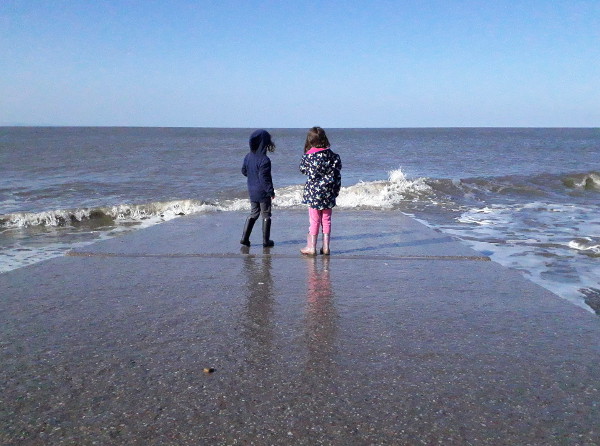
The rocks are interesting, though, with smoothly-eroded limestones overlain by a strange array of breccias. At their lowest are rocks consisting of an amalgam of limestone pebbles, as if a beach or riverbank from a few million years ago had been frozen exactly as it was. Above them are huge, rough black slabs looking for all the world like pieces of modern concrete or tarmac. If you told me that back in the Triassic, dinosaurs had worked out the basics of civil engineering, I’d now believe you.
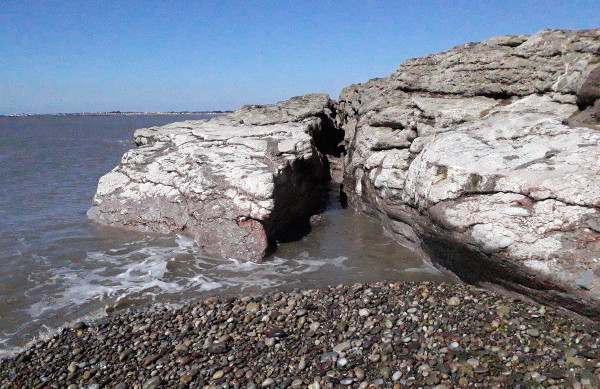
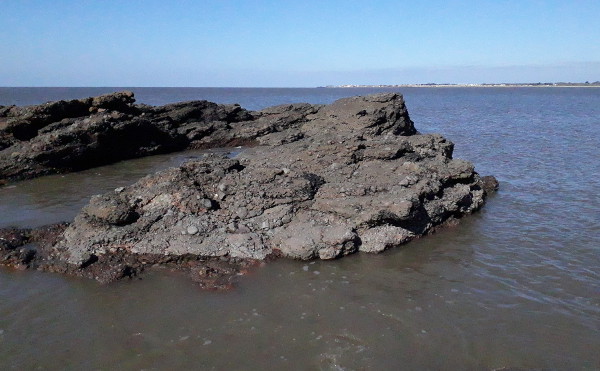
Ogmore-by-Sea is at the eastern side of the mouth of the River Ogmore. “Can we go to that beach over there?” said The Child Who Likes Animals, pointing to the far bank of the river. Over there, is Merthyr Mawr Warren, a vast area of sand dunes stretching from the western riverbank to the town of Porthcawl, with a long, broad stretch of sandy beach, Traeth yr Afon, facing on to the sea. So, today, we went to Merthyr Mawr.
At Ogmore-By-Sea, you can park your car at the top of the cliffs and amble down onto the shingle in a matter of seconds. Merthyr Mawr is a bit more of an expedition. The car park itself is by Candleston Castle, a ruined fortified manor that is about a mile or so from the sea. It’s an interesting place in itself, though.
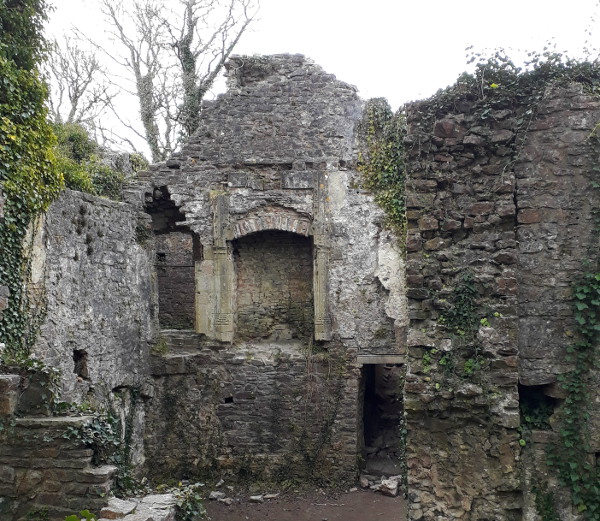
Walking the mile through the dunes to the beach itself is quite the exercise. Merthyr Mawr Warren has the highest dunes in Britain, the second highest in Europe. Because the paths through the dunes are frequently disturbed, they tend to be the areas with the softest sand. It becomes something of a slog, and you lose sight of all the wonder in the landscape, the unique flora and fauna that goes towards making it a very special place. Nevertheless, we managed to stop and watch huge numbers of solitary bees of some kind, going in and out of their burrows.
Walking through the dunes is also very disorientating; you start to wonder where you are, whether you are trapped and going around in circles. Nevertheless, if you pay attention to the details, you can begin to see how the dunes vary. Further from the shore, they are more stable, the sand is darker in colour, and there are entire bushes and trees holding the dunes together. Towards the sea, the largest plants are clumps of marram, and the sand has ever more fragments of shell in it. Eventually, breaching the final crest, you slide down onto the beach.
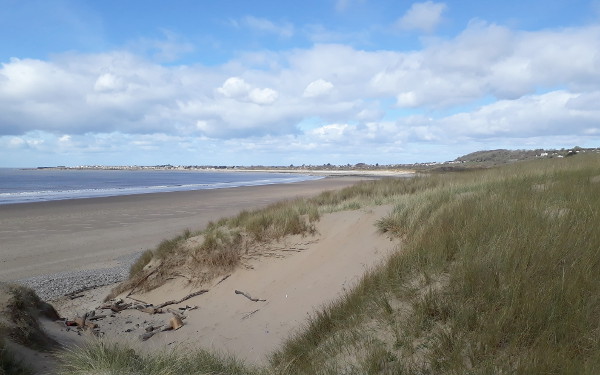
Traeth yr Afon is a very different prospect to the other side of the river. Open, windy, relatively deserted. Horses and riders gallop along through the firm sand at the shoreline. There is no coffee van, no lifeguard’s tower, no car park. Just the wind blowing fine sand along the surface, and the constant roar of the breaking waves.
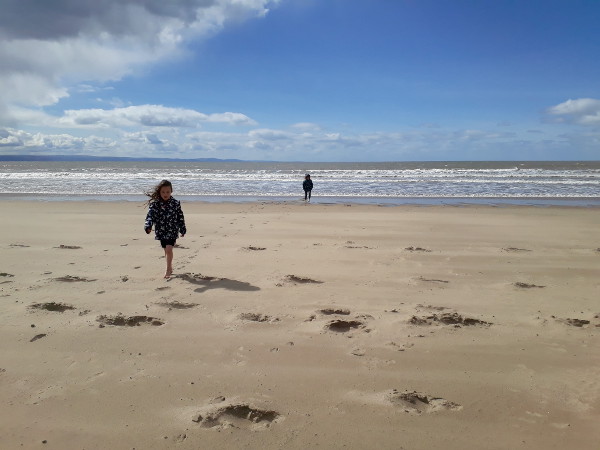
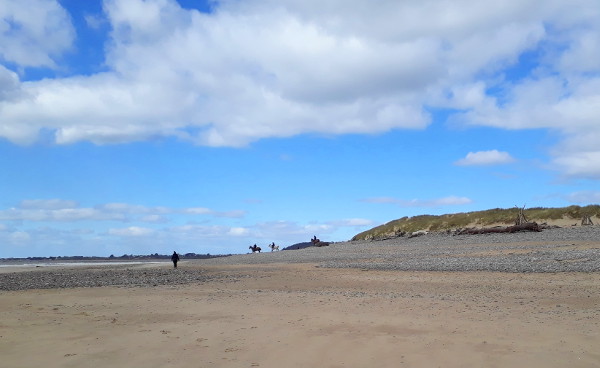
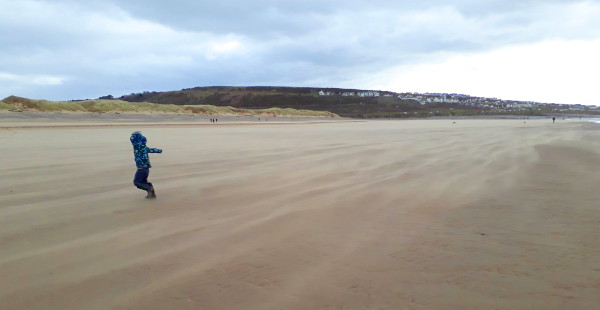
Which beach is better? That’s a matter of personal choice—and of your mood on any given day. Walking through the amazing dunes, allegedly so sandy and un-British they were used as a filming location for Lawrence of Arabia, is certainly hard work, compared with a beach that’s practically in a village. Walking along a deserted, windswept sandy shore, though, is generally just much more my taste. On the other hand, broad flat windswept dunes don’t also have fossil beds to go hunting in (for that, in the Vale of Glamorgan, you really want the beaches a few miles further east). There are always choices; it’s not a competition. We had two very different days out this weekend, but both were to amazing places.

 Home
Home